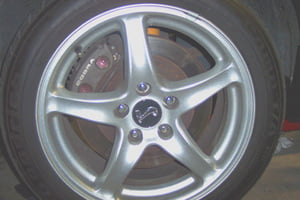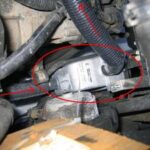The single most important system on your car isn’t the engine, or the electronics, or even the seat belts, but it is one of the most often overlooked systems on a car. The ABS brakes, of course, are required to stop the car. ABS brake repair and ABS brake service, for the requirements of this tutorial, will be considered separately, though a regular course of ABS brake service will help to forestall, or even prevent, ABS brake repair.
ABS brake repair consists primarily of the function of correcting a problem due to a lack of ABS brake service or faulty ABS brakes. In any case, the issue of beginning any ABS brake repair comes in diagnosing the problem. Look for the following symptoms to know that you must further inspect the vehicle in order to ascertain whether you will need to perform ABS brake repair, or ABS brake service.
-Squealing
-Crunching
-Grinding
-stopping distance much farther than normal
-mushy brake pedal
-ABS brake pedal depresses all the way to the floor
In any of these cases, further inspection is warranted of the ABS brake system. First, remove the wheels of the vehicle to inspect the ABS brakes fully. Check the pads or shoes for wear, and closely inspect the disc and drum for pitting, cracking, or excessive rust. If the ABS brakes are not working for a particular wheel, it might be possible to see corrosion on the surface of these parts. If they display any of these traits, or if discs are warped, it is generally best to replace them. Decreases in the cost of these brake repair parts make machining a faulty part little worth the time and effort. Particularly in small domestic cars and trucks, servicing the entire brake system at home should cost no more than $200-$300. Parts which are candidates for machining are those ABS brake parts which display no abnormalities and have been lightly exposed to wear.
ABS brake repair can be accomplished at home by the weekend mechanic, however, if after the ABS brake repair has been accomplished correctly, the same problem presents itself again, professional assistance is necessary. There could be a problem with one of the major parts of the ABS brakes such as the master cylinder.
In accomplishing an at-home ABS brake service, keep in mind to always be on the lookout for potential problem areas. Excessive brake dust on just one or up to three wheels indicates incorrect proportioning of hydraulic fluid to the ABS brakes, and is a matter of ABS brake repair, not ABS brake service. When performing an ABS brake service, be certain to check the level of your brake fluid, inspect the brake lines for corrosion or damage, and check the parking brake, as well. This service should be performed every time you rotate the tires of your car, so be sure to get into the habit of doing so every time the wheels are removed from the car.
Proper car and maintenance of your automotive brake systems will ensure that you avoid potentially costly repairs down the road, and also ensure your and your family’s safety when you’re on the road.





